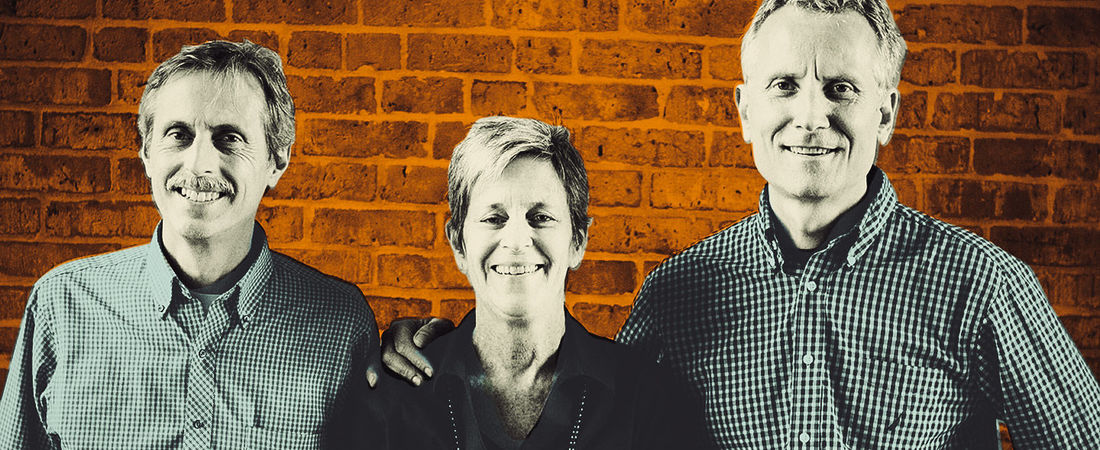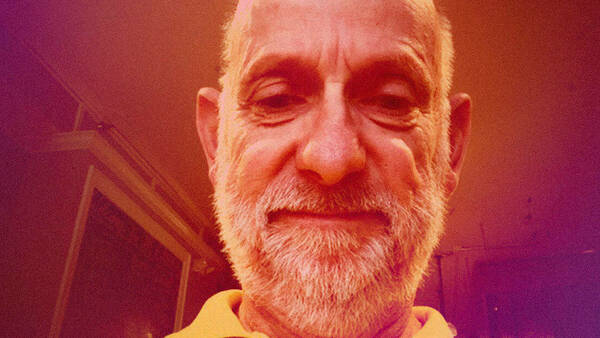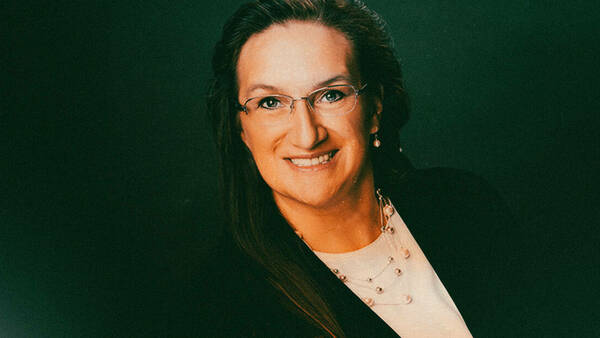When Kitty Ryan ’79, Bob Wegener ’80, and Neal Mongold ’80 were architecture students at Notre Dame, they knew each other as merely friendly acquaintances. But when they each moved to Boston after graduation, they kept running into each other — almost like they couldn’t avoid each other.
Ryan and Wegener were coworkers at one architecture firm, and a few years later, Mongold was their boss at a neighborhood community development corporation where they all worked together on affordable housing units. Once, they realized that all three of them had applied for the same job designing affordable housing.
And they kept crossing paths in their social lives, too: at The Paulist Center Catholic Church that they all attended, in a weekly faith and social justice discussion group in the city, and volunteering in the soup kitchen at Boston’s Catholic Worker House.
“As we were doing all these things outside of work, we spent a fair amount of time at work talking about what would feel meaningful to be doing with our lives,” Ryan says. “We spend so much time at work — eight hours, 10 hours a day, whatever it is — so much of our lives, and it didn’t feel connected to what was growing in us as more important, which was faith and social justice.”
Today, Ryan, Wegener, and Mongold are partners at The Narrow Gate, an architecture firm whose mission is to provide “architectural services for people who are often underserved or marginalized in our community: the poor, homeless and ill-housed, women, children, individuals in recovery, the elderly, and the disabled.” The company they created merges their expertise in architecture with their passion for social justice.
Ryan and Wegener founded the firm in 1987 and Mongold joined them a few years later. The name draws inspiration from the Gospel of Matthew, where Jesus says: “Enter through the narrow gate; for the gate is wide and the road broad that leads to destruction, and those who enter through it are many.”
“We knew we didn’t want to take the more common path of using our names,” Wegener says. “We landed on The Narrow Gate, because it not only has the biblical meaning to it, but it had an architectural imagery associated with it. Ancient cities with walls would have large, main entries for commerce, and there were also these smaller, more narrow gates in the wall that seemed more scaled to human beings—maybe less noticeable, but just as important. We thought the architectural imagery was a nice way to intersect with the meaning behind the Biblical reference. This way of life, it may be challenging, but it is worthwhile pursuing.”
And the early years of The Narrow Gate were indeed challenging, as they found clients and built the business. It’s the task of any new architecture firm, but in this case, their clients were often organizations with limited resources, in dire need of their services. The Narrow Gate started in Ryan’s living room, and then eventually moved to a rental office space on the Catholic Worker House property as they grew. Today, more than 30 years after its founding, The Narrow Gate has a team of 10 employees, and is recognized as one of the leaders in affordable housing design and creation in Massachusetts. In addition to their work designing and building housing and facilities for nonprofits and communities, The Narrow Gate works with the state to review affordable housing projects.
The Narrow Gate works on everything from new construction to remodeling existing structures. One of Mongold’s favorite projects was adding handicap accessibility services to an elderly housing building in Nahant, a northern suburb of Boston. The town’s housing authority hired The Narrow Gate to add an elevator and accessibility improvements like ramps to the building, and the additions were life-changing for residents. Not only is it now easier for residents to bring their laundry to the laundry room via an elevator instead of stairs, it is also more feasible to get from floor to floor to see each other or spend time in the community room, which improved their social life and community.
In Worcester, a city in central Massachusetts, Ryan is proud of their work at Abby’s House, an organization that provides shelter and housing to women with and without children who are dealing with homelessness, violence, or lack of income. The Narrow Gate redesigned and restored the 1920s building that serves as the site of offices, supportive services, and housing units for Abby’s House, making it handicap accessible, and most importantly, a warm and welcoming space for the women and their families.
Wegener makes sure that their work prioritizes sustainability and environmentally friendly practices. At Coppersmith, one of many Narrow Gate affordable housing complexes, the building has been designed to be resilient to storm surge waters from the nearby Boston Harbor and includes other green systems.
While all three of them manage projects and share the task of leading the firm as partners, they each bring their own distinct skillset to the table.
“We’ve often said we’re kind of like a tripod, that if any one of the three legs gave out, we would fall over,” says Mongold, who, according to his partners, brings a talent for detailed research and an expertise in Massachusetts state regulations for affordable and accessible housing.
Ryan sets the tone for the company culture, keeping them focused on their core values while also cultivating an atmosphere that celebrates successes and makes time for camaraderie. In addition to his commitment to sustainability, Wegener is also known for his calm, focused demeanor—especially when things get hectic or stressful on a construction site for one of their projects.
In addition to their work throughout Massachusetts, the trio has also been collaborating with Kim Rollings, an assistant professor in Notre Dame’s School of Architecture, for the past five years. All three alumni credit Notre Dame for nurturing their faith, which led them down the path of social justice and subsequently creating The Narrow Gate. Now, they want today’s architecture students to think about integrating design and equity even sooner, while they are still in school.
Each year during spring break, The Narrow Gate hosts Rollings and her students—in their homes, at the office, and on-site at their various projects—to share their work.
“The class is a supportive housing studio,” Ryan says. “We host them at all of our houses, and I take them to our supportive housing projects. They interview residents, they interview staff, and then their project is to design supportive housing for either a site in South Bend or, this year, in Worcester.”
These students get to see a one-of-a-kind approach firsthand. While there are other firms in Boston and throughout the country that focus on affordable housing, Mongold says, “There are no other firms in Massachusetts like The Narrow Gate, and by that I mean a firm that has a mission that’s driven by a faith-based motivation towards social justice. It’s not a requirement for people to share the faith-based focus but we are unique in that what we do is based on a social justice outlook."



